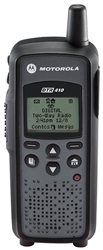 Workers in the Crane/Shipyards industry need to collaborate, and to do so they need the support of efficient communications equipment. Intercoms can be wired or wireless and each type has its advantages.
Workers in the Crane/Shipyards industry need to collaborate, and to do so they need the support of efficient communications equipment. Intercoms can be wired or wireless and each type has its advantages.
Rather than spending excessive time pondering over wired intercom units or wireless types you might concern yourself more with the grade. Grades for intercoms are industrial grade, commercial grade, or, marine grade, and, if you are working in the crane/shipyards industry you want to equip your operation with an industrial grade intercom network. These intercoms offer a long range (up to two miles in some instances), weather proofing, are vandalism safe, and are easy to install. Whereas some intercom systems can only reach distances that can be measured in feet, others such as the industrial grade intercoms will reach distances from one to two miles. Buying an intercom that has extra range lets you tackle larger operations as they present themselves and prevent future problems.
In a shipyard there are massive exchanges of merchandise passing through, and communication between destinations is crucial so that items don’t become lost in transit or misplaced. Cranes and their drivers who operate them are used to carry items from location to location. The boss should have continual access to each crane operator to prevent any mistakes and boost the speed of the whole operation.
Intercoms that are free of background noise are mandatory; cheaply-made intercoms that don’t possess the means to cut out background noise will not meet the grade. Wireless intercoms of a high industrial grade with hands-free operation are the best suited for work in a Crane/Shipyards environment. Many good quality intercoms have a hands-free mode as an option. Low background noise is one of the benefits, with rapid data transfer and the use of an intercom base station with several handsets handed out to each worker on the field.
It is important to know how many dollars are at stake on a shipyard. Long hours, heavy workloads and even the weather go into the picture of the operating costs. Intercoms that can endure Mother Nature, reduce background noise, and reach all workers will save many thousands of dollars and are worth the investment. As you add handsets you will not be paying as much per unit as you do for the base unit. Finally, you can provide power to popular long range wireless intercom units in one of many ways, via a 9-13 Volt DC possessing at least one amp, via a solar power system or by use of a 12-VDC, AC to DC, outdoor intercom power supply adaptor.
